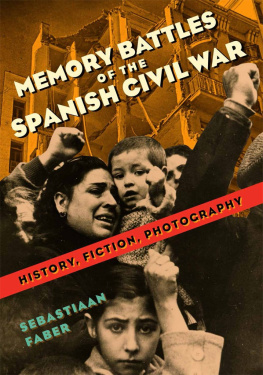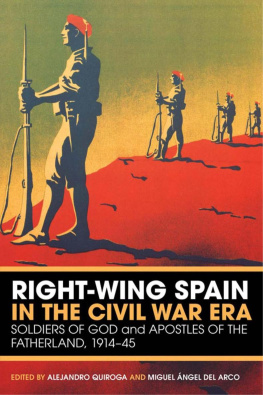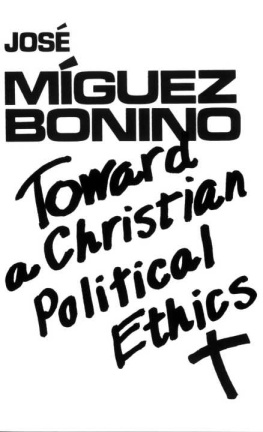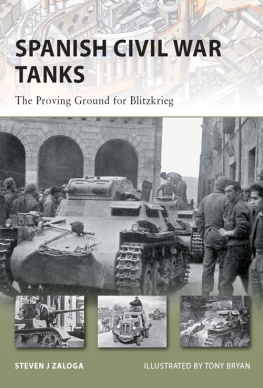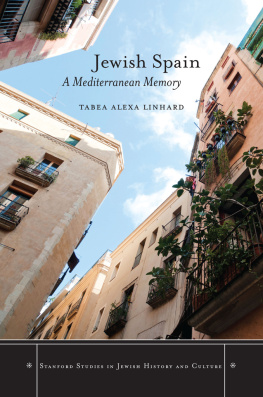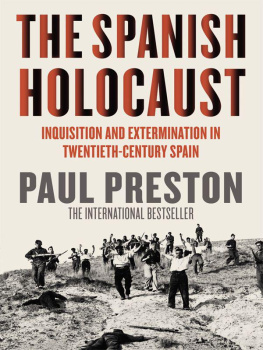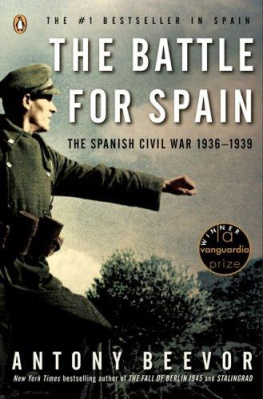Antonio Mguez Macho is Associate Professor of Contemporary History. Formerly Ramn y Cajal Fellow at the University of Santiago de Compostela (where he completed his PhD) and visiting researcher at the London School of Economics. He has published The Genocidal Genealogy of Francoism: Violence, Memory and Impunity (2016). He was Principal Investigator in four funded research projects over one year from 2012 to 2020. His current work-in-progress are two essays: The Destruction of AntiSpain: Coup dtat and Genocidal Practices (Spain 19361945), in Cambridge World History of Genocide, vol. 3, Genocide in the Contemporary Era, 19142020, ed. Ben Kiernan (forthcoming) and The Last Crusade: Holy War and Genocidal Practices in the Case of the Spanish Civil War (19361939), Routledge Handbook on Religion and Genocide, ed. Sara E. Brown and Stephen Smith (in progress).
Miguel ngel del Arco Blanco is Associate Professor and Director of the Department of Contemporary History at the University of Granada. His work centres on the study of fascism, the Spanish Civil War and Francoism. He is the co-editor, with Peter Anderson, of Mass Killings and Violence in Spain, 19361952: Grappling with the Past (2014). He has recently published two essays: Famine in Spain During Francos Dictatorship (193952), Journal of Contemporary History (2021) and, with Santiago Gorostiza, Facing the Sun: Nature and Nation in Francos New Spain(193651), Journal of Historical Geography (2021).
Conchi Lpez Snchez is a PhD candidate at the University of Santiago de Compostela and member of the research group Histagra. She was a research support technician in relation to several research projects on Francos violence in Galicia for the history department at the university. Her lines of research focus on the coup of 1936, the Spanish Civil War and the Franco regime, and she is completing her doctoral dissertation on the military trials in Galicia after the coup of 1936.
Xabier Buxeiro Alonso is a PhD candidate at the University of Santiago de Compostela and member of the research group Histagra. He was visiting researcher at Birkbeck College in London. His doctoral research concentrates on the cycle of mass violence initiated as a result of the 1936 coup in Galicia.
Rafael Garca Ferreira is a PhD candidate at the University of Santiago de Compostela and member of the research group Histagra. He was previously involved in the research project Genocidal practice, memory and transitional justice in comparative perspective. He is completing his doctoral thesis on how violence transformed the city and the people who lived through it (Santiago de Compostela, 19361939).
Claudio Hernndez Burgos is Assistant Professor at the University of Granada. He has been a Postdoctoral Fellow at the university and visiting fellow at the Universit della Sapienza in Rome, the London School of Economics and the Universidad Autnoma in Madrid. In 2013 he co-edited a book about political attitudes in Francos regime: No solo miedo. Opinin popular y actitudes sociales bajo el franquismo and recently edited Ruptura The Impact of Nationalism and Extremism on Daily Life in the Spanish Civil War (19361939) (2020).
Aldara Cidrs is a PhD candidate at the University of Santiago de Compostela and member of the research group Histagra. Her doctoral research examines mass violence during the Spanish Civil War focusing on perpetrators and perpetration. He was visiting researcher at Princeton University in 2019.
Iria Morgade Valcrcel is a PhD candidate at the University of Santiago de Compostela and member of the research group Histagra. She holds a degree in Political Science from the Complutense University of Madrid and two Masters degrees, one in International Migrations from the University of A Corua and the other in Teaching from the University of Santiago de Compostela. She is completing her doctoral thesis on the activity of the Spains historical memory movement since 1975.
Erik Zubiaga Arana is Lecturer at the Public University of Navarre. He gained his PhD at the University of Basque Country and has published several books and articles on Basque Studies, Spanish Civil War and ETA terrorism. His first book is titled La huella del terror franquista en Bizkaia. Jurisdiccin militar, polticas de captacin y actitudes sociales (19371945) (The footprint of Francos terror in Bizkaia. Military jurisdiction, recruitment policies and social attitudes [19371945]) (2017).
Marina Montoto Ugarte gained a PhD from the Department of Social Anthropology at Complutense University of Madrid. Her PhD research was focused on the judicial process initiated in Argentina by the victims of Francoism, the so-called querella argentina (Argentinian Complaint). Her primary research interests include the representation of the victims of Francoism in the context of the political as well as biological challenges that mark the present time.
Antonio Mguez Macho
In the era of memory, as our period has come to be known, it seems paradoxical that the most frequent phenomenon is forgetting: our societies encourage the forgetting of pasts that are traumatic, uncomfortable and not very practical for the purposes of the present. This is why we often feel disorientated when we move across the inhabited/uninhabited spaces of our cities and our countryside. We are continually in need of a guide: Google Maps to determine our location and give directions, a QR code to tell us what we are seeing, Tripadvisor to justify our journey according to the opinions of others. Spaces force us to materialize memory and therefore constitute a fascinating field of study.
It was a French sociologist, Maurice Halbwachs, who was the first to perceive the topophilic potential of memory. He also understood that memory not only refers to individual remembering, but is a construct in which the processes of social construction, shared meanings and policies of commemoration converge as well. Halbwachss discovery took place in the post-First World War historical context. In fact, his life was marked by the Franco-German rivalry for a territory, a space, in dispute (Alsace and Lorraine) that changed hands twice during his lifetime. It was German when he was born an occupation that resulted from the Franco-Prussian War it became French after the Great War but returned to German control at the end of his days in the Second World War. The death of the Frenchman in Buchenwald after being arrested by the Gestapo is the perfect
The semantic load of places as memory spaces is a characteristic that arose in the profoundly shaken world of post-war Europe through the public authorities policies of commemoration. In the First World War, military cemeteries were institutionalized, realizing the idea that those who fought together would lie for eternity together. They constituted the number one space for the modern worship of the fallen. It is these magnificent monuments to the dead that magnify and justify their sacrifices.
Until the beginning of First World War, the main liberal states had been engaged in a process of nationalization built on the basis of great figures who represented the milestones of the homeland. The statues and monuments erected in the main European capitals between the end of the eighteenth century and throughout the nineteenth century are testimony to this: the equestrian statue of Peter the Great (the Bronze Horseman) in Saint Petersburg, Nelsons Column in Trafalgar Square, the Vendme Column crowned by Napoleon in Paris, and the equestrian statue of Frederick the Great in Unter der Linden. In revolutionary periods, this monumentalization was briefly dedicated to the people, as an agent of social transformation. Examples of this include Goyas masterpieces on the Spanish uprising against the Napoleonic invasion or the evolution immortalized in the Arc de Triomphe from its conception in the Napoleonic period to its inauguration in 1836. The initial recognition of revolutionary citizens in the Arc de Triomphes sculptures was finally transformed into the tastes of the post-revolutionary era. Beyond these ephemeral yet transcendental revolutionary moments, up until the First World War, the way to commemorate the myths of nation-building was based on exceptional kings, soldiers or heroes, rather than the faces of anonymous citizens.



